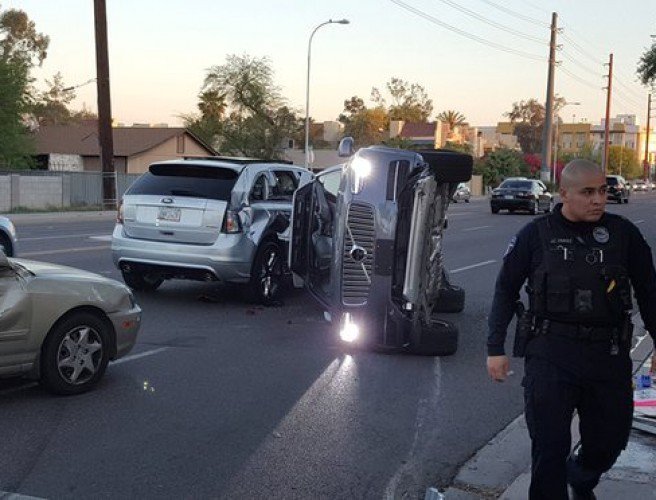Uber suspended self-driving cars after an incident in Arizona, United States.
The self-driving cars are already in the testing phase. The program was first introduced in California and recently moved to Arizona. The incident apparently took place because another driver who failed to yield to oncoming Uber Vehicle while making a turn.
The self-driving car collided with the other car, causing it to roll onto its side. However, luckily, everyone involved in the accident escaped the incident without injuries.
Why Uber Suspended Self-Driving Cars?
In response to the accident, Uber suspended self-driving cars. A Volvo was involved in the crash. The accident has prompted the company to suspend the self-driving cars.
Uber suspended self-driving cars in San Francisco, Pittsburgh, and Arizona.
During the first launch in California, one of Uber’s self-driving cars ran a red light. Even the program it started in Pittsburgh required human intervention.
A few days ago one of the Tesla cars in autopilot mode and another Google self-driving cars were also involved in crashes earlier.
Uber wants to shift to self-driving cars to make this fantasy a reality and improve its profitability even further. Uber self-driving cars will put a lot of drivers out of a job.
Challenges Faced in Launching Self-Driving Cars
The self-driving cars pose some significant problems for the companies behind them. Let us have a look at some of the biggest challenges.
Technology Not Yet Ready
The first thing is the readiness of technology far from perfect. Auto experts believe that the technology currently available in the form of Driver Assist will further enhance to make it to self-driving cars. Many accidents happened because the driver was not able to timely take control back from the autonomous system in time to prevent the accident from happening.
Consumer Education Still Not There
It is not easy for a self-driving car to manipulate itself in busy highways with so much traffic. People hardly feel the need to interact when they need to protect themselves from dangers. Companies behind the self-driving cars must educate the drivers the need to remain alerted and engage the vehicle well in time to avoid future accidents from taking place.
Level of Vehicle Autonomy May Vary
The level of engagement is changed from four to five levels by the US government. Here are the five levels defined.
Level 0 – No autonomy, the driver is in full control.
Level 1 – The driver is controlling most of the vehicle and limited control allowed to the autonomous system.
Level 2 – Partial automation where the driver is only allowing the system to control brake and acceleration.
Level 3 – Conditional autonomy where the software and sensors take control but alert the driver whenever there is a need to drive the vehicle.
Level 4 – High-level automation where if the driver fails to re-engage, all the devices supporting the system can safely drive the car out of danger.
Level 5 – This is the highest level of self-driving autonomous mode where the system does not even alert the driver to critical driving conditions and takes care of all the maneuvers.
Removal of All Physical Controls
Some companies behind the self-driving cars say that these autonomous vehicles do not need to have physical controls like brake pedal or steering wheel. Removal of physical controls is another issue which needs discussion before the cars can drive themselves without the need for human intervention.


